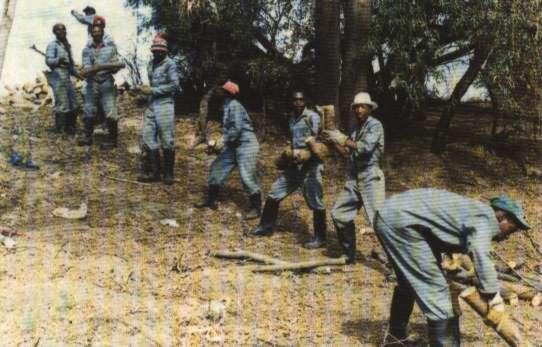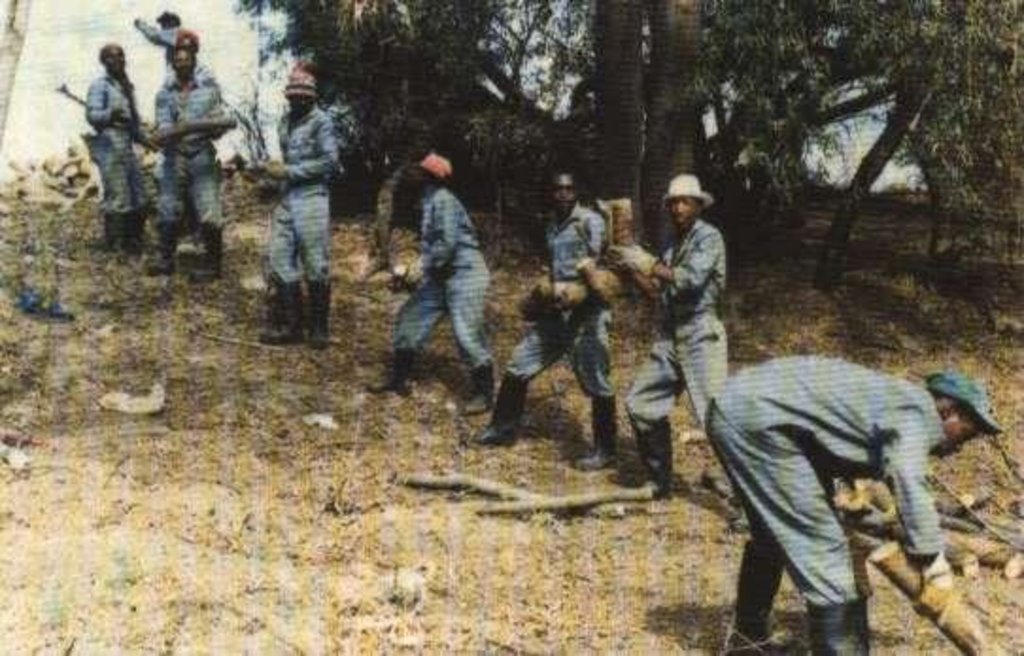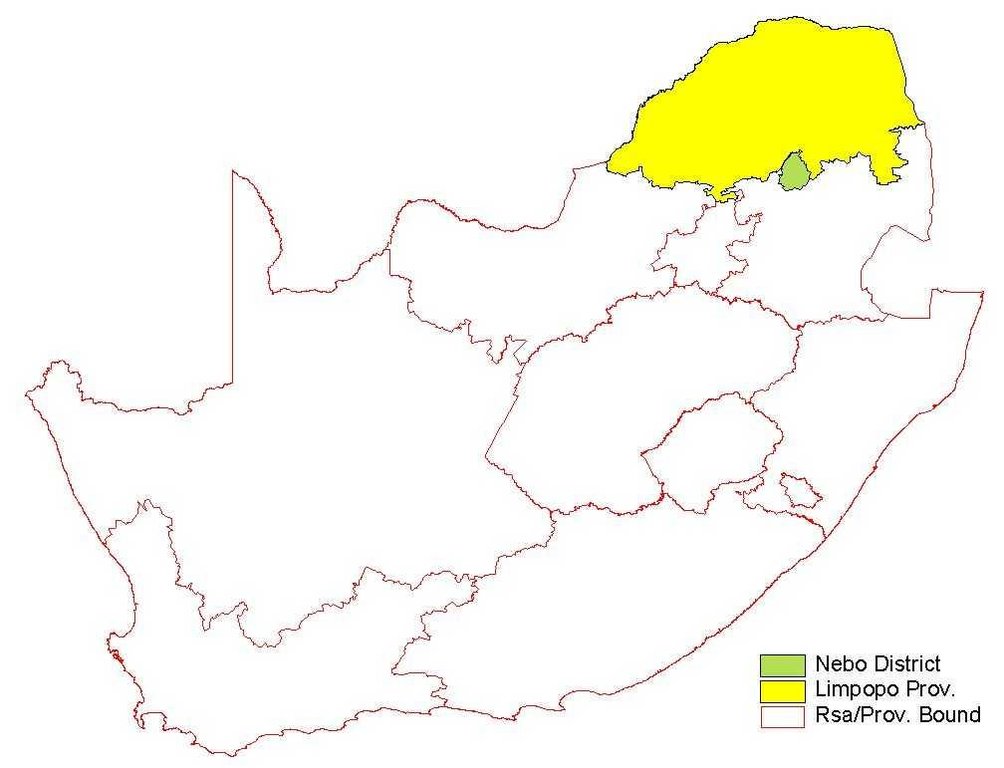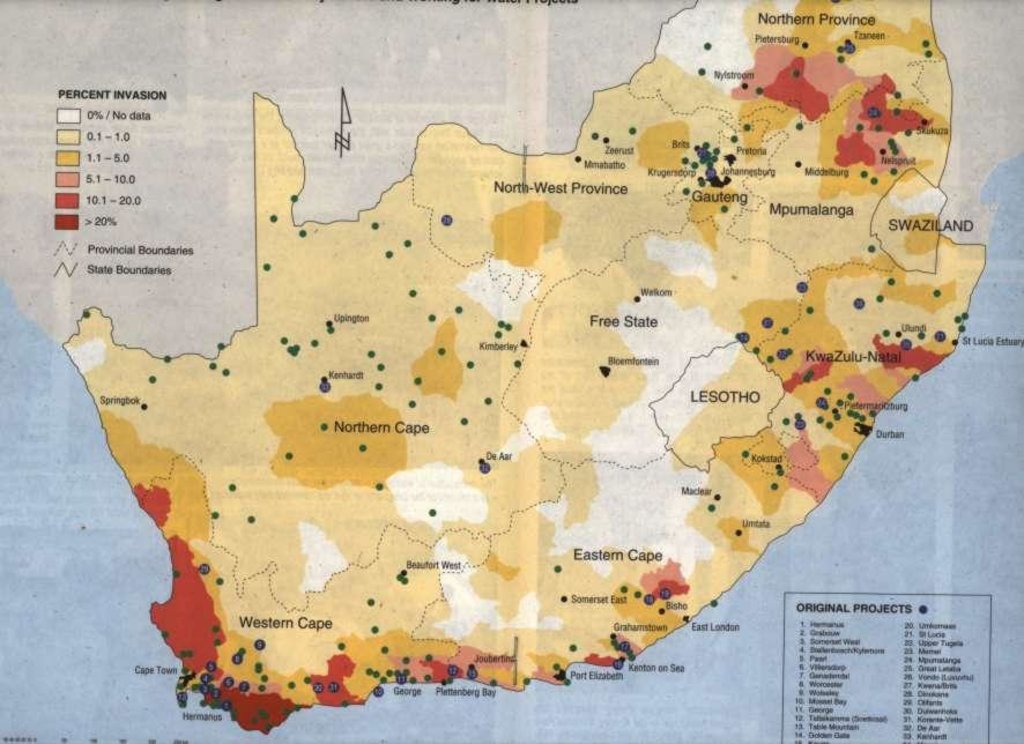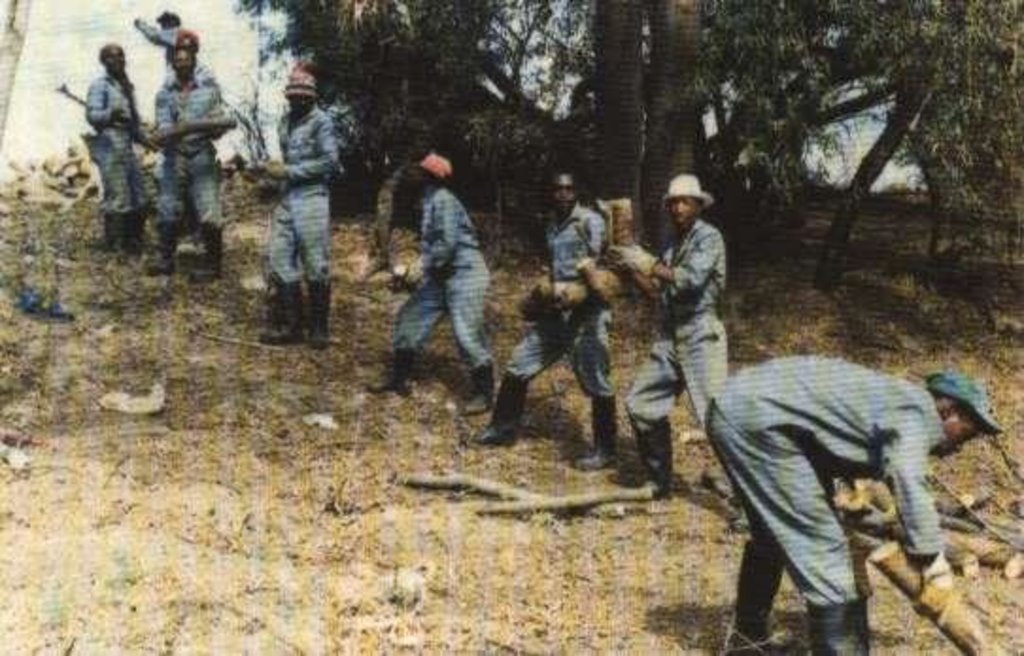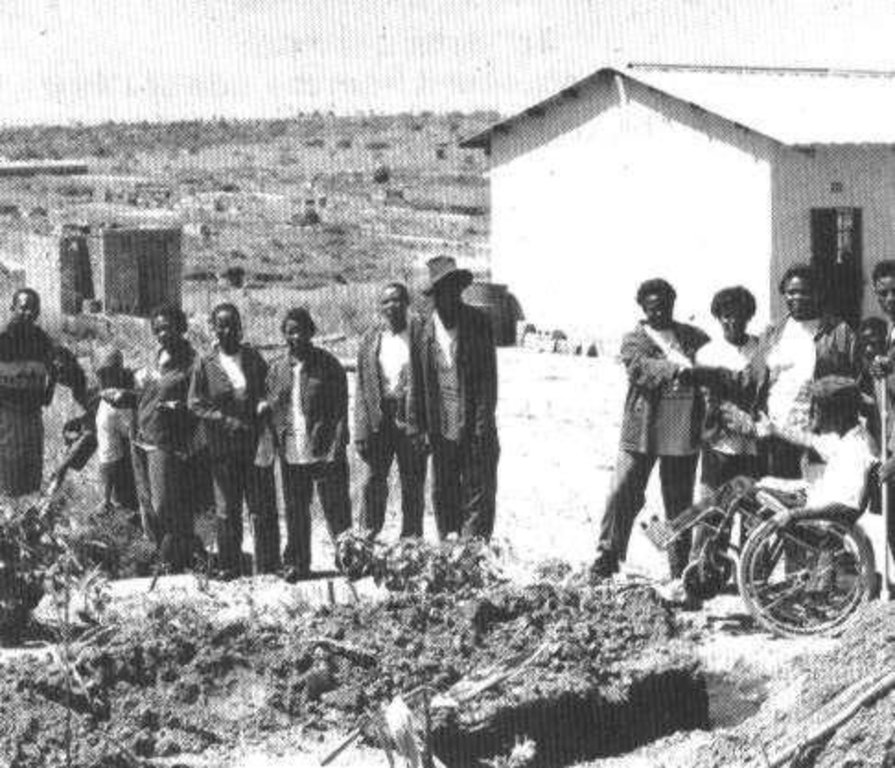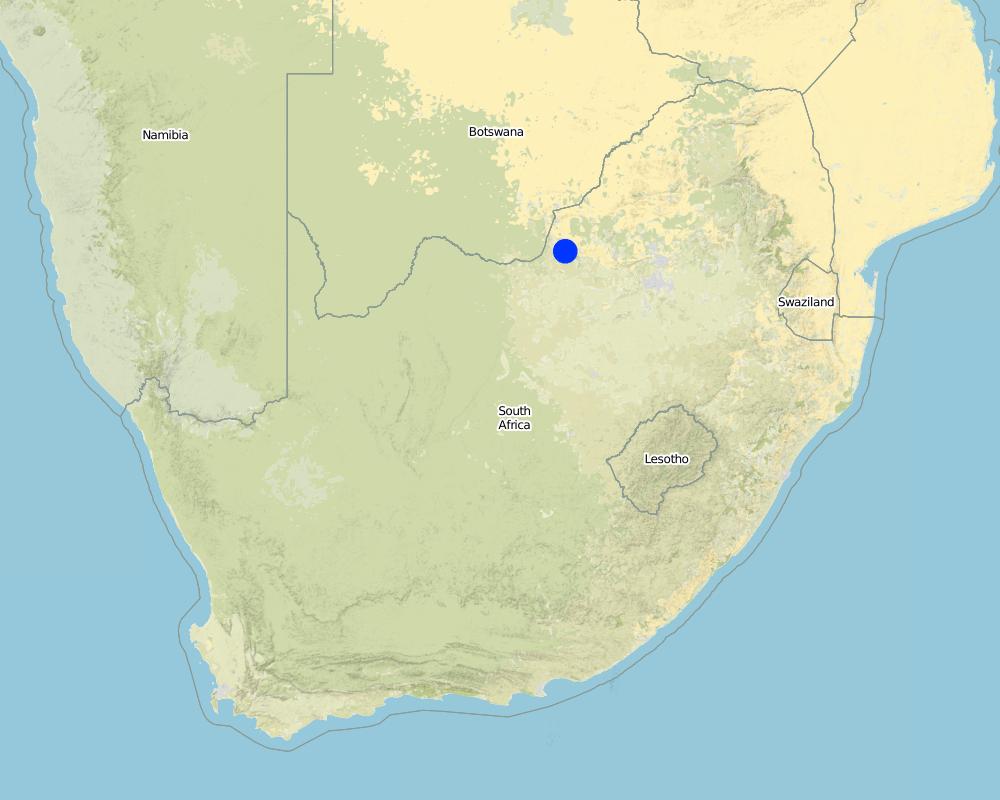Inter departmental approach [South Africa]
- Creation:
- Update:
- Compiler: Jacqui Coetzee
- Editor: –
- Reviewer: Fabian Ottiger
approaches_2644 - South Africa
View sections
Expand all Collapse all1. General information
1.2 Contact details of resource persons and institutions involved in the assessment and documentation of the Approach
Name of the institution(s) which facilitated the documentation/ evaluation of the Approach (if relevant)
Working for Water (WfW) - South Africa1.3 Conditions regarding the use of data documented through WOCAT
The compiler and key resource person(s) accept the conditions regarding the use of data documented through WOCAT:
Yes
2. Description of the SLM Approach
2.1 Short description of the Approach
Eradication of invasive alien plants to enhance water sustainability by increasing run-off into dams & rivers.
2.2 Detailed description of the Approach
Detailed description of the Approach:
Aims / objectives: Programme started in October 1995, employing previously disadvantaged unemployed people to clear invading trees in catchments and along rivers. This has been going on for approximately 4 years. The leading department is the Department of Water Affairs and Forestry but they have been in partnerships with a number of other departments e.g. Land Affairs, Agriculture, South African National Parks, Welfare etc. Labour intensive methods are used to clear trees and apply herbicides to prevent regrowth. Where in sensitive areas, rehabilitation techniques are employed e.g. sowing grass seeds and re-establishing indigenous plants. There are also some wetland rehabilitation projects across the country where engineering techniques are used to rehabilitate wetlands. The Inter-departmental approach is unique in the country, but very important as objectives span all departments. The work is done on farmland, community land, private company land and governmental land. New laws will force landowners to clear large stands of alien trees in future and this programme offers landowners a way of clearing their land before the law is enforced. The approach is to use labour intensive clearing techniques to provide jobs and also tackle an ecological problem. In so doing, the programme tackles socio-economic issues and environmental issues. The major objective is to create sustainable water supplies in a drought prone country; hence - Working for Water'- (providing work to unemployed and increasing water availability).
2.3 Photos of the Approach
2.5 Country/ region/ locations where the Approach has been applied
Country:
South Africa
Region/ State/ Province:
All 9 Provinces
Map
×2.6 Dates of initiation and termination of the Approach
Indicate year of initiation:
1995
Year of termination (if Approach is no longer applied):
2015
2.7 Type of Approach
- project/ programme based
2.8 Main aims/ objectives of the Approach
The Approach focused mainly on SLM with other activities (Social development & job creation; AIDS/HIV awareness, cr??ches, secondary industries)
- To clear invasive alien plants & re-establish indigenous vegetation. - To create jobs - To find markets for wood products - To promote productive potential of land - Facilitate economic empowerment
The SLM Approach addressed the following problems: Aggressively invading alien plants; wetland rehabilitation; biodiversity impacts; social development & empowerment.
2.9 Conditions enabling or hindering implementation of the Technology/ Technologies applied under the Approach
availability/ access to financial resources and services
- hindering
Expensive to clear large tracts of land
Treatment through the SLM Approach: SA is drought prone, sold the idea on potential water benefits.
institutional setting
- hindering
Responsibly to clear plants falls between 2 departments - Environment & Agriculture
Treatment through the SLM Approach: On back of water benefit, Department of Water Affairs began clearing
legal framework (land tenure, land and water use rights)
- hindering
Law was not enforced and also not defendable in court.
Treatment through the SLM Approach: Water law & Agricultural resources Act is under review to be more comprehensive.
The existing land ownership, land use rights / water rights moderately hindered the approach implementation Difficult to explain to landowner why we want to chop trees on their property, does not have to let us on.
other
- hindering
Perceptions: People perceive a tree as good - do not distinguish between alien & indigenous
Treatment through the SLM Approach: Massive public awareness campaign.
3. Participation and roles of stakeholders involved
3.1 Stakeholders involved in the Approach and their roles
- SLM specialists/ agricultural advisers
Municipalities; Water boards
Previously disadvantaged groups (e.g. by apartheid system), women & youth. 50-60% of our work force are women. Very physically demanding work therefore not many women. Chainsaw operators. Women are also nervous of being in supervisory position or take on responsibility of being contractors. Not many women project managers - partially due to fact that forestry industry is mostly male dominated. Communities supply the labour to do clearing through consultation, become aware of impacts of alien plants
- NGO
CSIR; Conservation bodies; SA National Parks
- private sector
Forestry companies
- national government (planners, decision-makers)
Department of Water Affairs & Forestry (head agency)
If several stakeholders were involved, indicate lead agency:
Dr. Brain van Wilgen: Scientific input on clearing operations. Dr Amy Presten: Scientific & Social Implications. (Dr Christo Marais): Nature Conservation Specialists on biodiversity and a number of forestry specialists as well.
3.2 Involvement of local land users/ local communities in the different phases of the Approach
| Involvement of local land users/ local communities | Specify who was involved and describe activities | |
|---|---|---|
| initiation/ motivation | passive | rapid/participatory rural appraisal; Land owners informed of project and project manager determines if possible to work on land |
| planning | interactive | rapid/participatory rural appraisal; Alien vegetation mapped at 1: 50 000, social dynamics determined, availability of funding plays a major role |
| implementation | external support | Mainly: casual labour; partly: responsibility for minor steps; Community supplies labour to clear trees; can be responsible to provide transport etc. |
| monitoring/ evaluation | passive | Local people (farmers, communities) provide valuable feedback on progress; evaluation process mostly external |
| Research | passive |
3.4 Decision-making on the selection of SLM Technology/ Technologies
Specify who decided on the selection of the Technology/ Technologies to be implemented:
- politicians/ leaders
Explain:
directive (top-down).
Decisions on the method of implementing the SLM Technology were made by mainly by SLM specialists with consultation of land users. directive (top-down).
4. Technical support, capacity building, and knowledge management
4.1 Capacity building/ training
Was training provided to land users/ other stakeholders?
Yes
Form of training:
- on-the-job
- courses
Subjects covered:
Alien plant awareness, water conservation awareness, all workers are given an introduction course on program principles
4.3 Institution strengthening (organizational development)
Have institutions been established or strengthened through the Approach?
- yes, a little
Specify the level(s) at which institutions have been strengthened or established:
- local
4.4 Monitoring and evaluation
Is monitoring and evaluation part of the Approach?
Yes
Comments:
technical aspects were regular monitored through measurements
socio-cultural aspects were ad hoc monitored through observations
economic / production aspects were regular monitored through measurements
area treated aspects were regular monitored through measurements
management of Approach aspects were regular monitored through measurements
There were many changes in the Approach as a result of monitoring and evaluation: External M & E identified many problems in implementation of approach and inefficient operations standards were developed and are being applied. More stress on productivity. More detailed and planned social awareness projects were implemented rather than ad hoc approaches.
4.5 Research
Was research part of the Approach?
Yes
Give further details and indicate who did the research:
Biological control research & implementation in certain areas; impact of programme on local communities; cost/benefit of clearing alien plants
Research was carried out both on station and on-farm
5. Financing and external material support
5.1 Annual budget for the SLM component of the Approach
Comments (e.g. main sources of funding/ major donors):
Approach costs were met by the following donors: government (national - Department of Water Affairs): 90.0%; international non-government (Municipalities/water board/local authori): 10.0%
5.2 Financial/ material support provided to land users
Did land users receive financial/ material support for implementing the Technology/ Technologies?
Yes
5.3 Subsidies for specific inputs (including labour)
- equipment
| Specify which inputs were subsidised | To which extent | Specify subsidies |
|---|---|---|
| machinery | fully financed | Chainsaws |
| tools | fully financed | Slasher |
- agricultural
| Specify which inputs were subsidised | To which extent | Specify subsidies |
|---|---|---|
| Biocides | fully financed | |
- infrastructure
| Specify which inputs were subsidised | To which extent | Specify subsidies |
|---|---|---|
| Community infrastructure | partly financed | |
If labour by land users was a substantial input, was it:
- paid in cash
Comments:
Wages & salaries for workers
5.4 Credit
Was credit provided under the Approach for SLM activities?
No
6. Impact analysis and concluding statements
6.1 Impacts of the Approach
Did the Approach help land users to implement and maintain SLM Technologies?
- No
- Yes, little
- Yes, moderately
- Yes, greatly
Water management more sustainable and improved biodiversity and decrease erosion
Did the Approach improve issues of land tenure/ user rights that hindered implementation of SLM Technologies?
- No
- Yes, little
- Yes, moderately
- Yes, greatly
We need a law to enable us to clear trees, the law is still in development and not enforceable as yet. Rely on registrations with landowners. The problem is likely to be overcome in the near future. 2 new laws in pipeline - Agricultural - Natural Resources act & New Water law which will list alien plants as a stream flow reduction activity.
Did other land users / projects adopt the Approach?
- No
- Yes, little
- Yes, moderately
- Yes, greatly
South Africa National Parks - using alien clearing on their parks to enhance social situation & empowerment
6.3 Sustainability of Approach activities
Can the land users sustain what has been implemented through the Approach (without external support)?
- yes
6.4 Strengths/ advantages of the Approach
| Strengths/ advantages/ opportunities in the land user’s view |
|---|
| Sustainable water supply in drought prone areas (How to sustain/ enhance this strength: Bring alien plant invasions to a sustainable/maintenance level to allow landowners minimal input to control them) |
| Increased biodiversity in invaded areas (How to sustain/ enhance this strength: Bring alien plant invasions to a sustainable/maintenance level to allow landowners minimal input to control them) |
| Empowerment at local communities (How to sustain/ enhance this strength: WFW is just a kick start for the communities, once they have receive training they are empowered to seek jobs elsewhere) |
| Vehicle for many other departments to reach a large number of people (e.g. for HIV/AIDS awareness, rape/abuse) (How to sustain/ enhance this strength: WFW is just a kick start for the communities, once they have receive training they are empowered to seek jobs elsewhere) |
| Strengths/ advantages/ opportunities in the compiler’s or other key resource person’s view |
|---|
| Sustainable water supply in drought prone areas (How to sustain/ enhance this strength: Bring alien plant invasions to a sustainable/maintenance level to allow landowners minimal input to control them) |
| Increased biodiversity in invaded areas (How to sustain/ enhance this strength: Bring alien plant invasions to a sustainable/maintenance level to allow landowners minimal input to control them) |
| Empowerment at local communities (How to sustain/ enhance this strength: WFW is just a kick start for the communities, once they have receive training they are empowered to seek jobs elsewhere) |
| Vehicle for many other departments to reach a large number of people (e.g. for HIV/AIDS awareness, rape/abuse) (How to sustain/ enhance this strength: WFW is just a kick start for the communities, once they have receive training they are empowered to seek jobs elsewhere) |
6.5 Weaknesses/ disadvantages of the Approach and ways of overcoming them
| Weaknesses/ disadvantages/ risks in the land user’s view | How can they be overcome? |
|---|---|
| Stop or start the nature of funding - contract workers who never know if they have a job from one year to the next | Sustainable funding |
| Weaknesses/ disadvantages/ risks in the compiler’s or other key resource person’s view | How can they be overcome? |
|---|---|
| Lack of planning | Sustainable and assured funding will allow for better planning and mapping |
| Lack of adequate alien vegetation maps | Sustainable and assured funding will allow for better planning and mapping |
| Lack of national weeds policy | Need to mobilise relevant departments to start work |
| Lack of follow-up because of inadequate planning and mapping |
7. References and links
7.1 Methods/ sources of information
- field visits, field surveys
- interviews with land users
Links and modules
Expand all Collapse allLinks
No links
Modules
No modules


